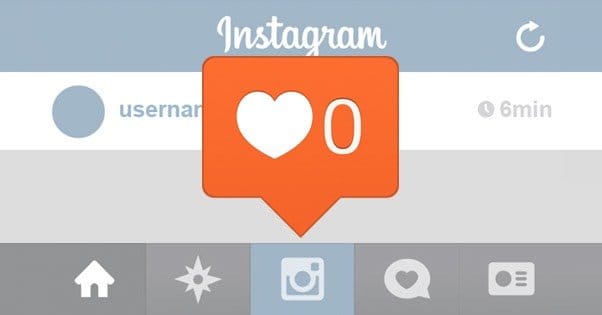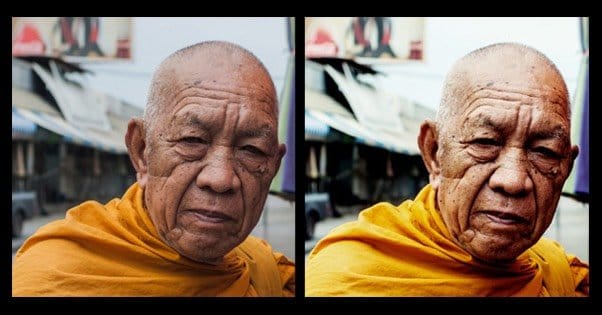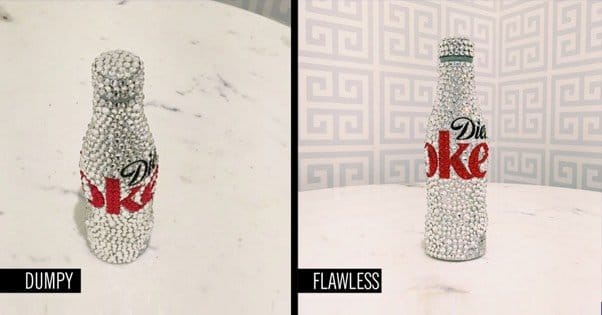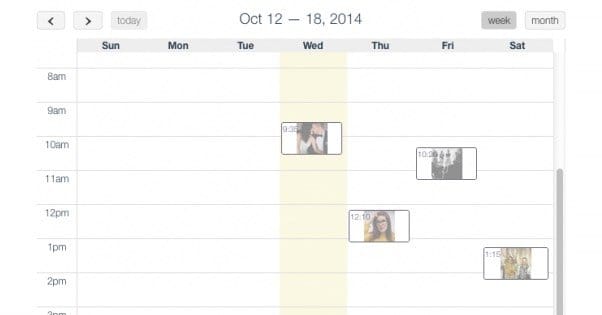 Written by ContentPowered.com
Written by ContentPowered.com
Any time you post a new photo on Instagram – or really any post on any social network – you want more engagement. On Instagram, that means likes and comments.
When you get right down to the details, getting more likes on an Instagram photo can be broken into two categories of action. The first is making your existing audience more engaged, specifically more engaged with your current piece of content. The second is growing you audience, such that you end up with more users, from which a larger number of them will engage. I’ve compiled tips to help you do both.
Getting More Engagement
Use more hashtags. Instagram allows up to 30 hashtags per post, and according to studies done by Dan Zarella, actually using all 30 of them has the best positive impact. Unlike other hashtag-enabled platforms, you’re not spamming on Instagram. You’re just opening up your content to the widest possible audience.
Of the 30 hashtags you use, most of them should be broad, general tags. Very few of them should be branded tags. I would venture to say no more than five of them should be branded. Why? If you’re looking to get more broad exposure, you need tags with audiences who aren’t already seeing your content. Branded tags are tags only your followers are likely to be browsing, and then only once they’ve seen content tagged with them. General tags open you up to a huge number of potentially new users.
You should also strive to minimize overlap between tags. Don’t do things like #SEO #SearchEngineOptimization #SearchMarketing #Marketing #Search, because most of those are redundant with one another. Instead, cover different aspects of the industry, of the topic, and even of the image itself. If you’re using a traditional Instagram filter, #FilterName is a good tag to use.
Speaking of filters, don’t use them. A lot of studies have been done on which filter works best, but the thing is, 90% of those studies are reliant on the type and context of the content more than the filter. It isn’t as though they’re taking the same image on 5 different filters and seeing which does better. They’re studying the filter tags and counting engagement. As it turns out, not using a filter – and thus using #NoFilter – is the best for getting engagement on average.
This makes sense, though. Any image you’re posting as a brand is an image you should be running through your own internal image editing process. Composition matters more than some dinky filter, by a long shot. Any editing you do in post before you transfer the image to a phone to upload will just be spoiled by adding a basic filter over the top.
Think about it this way. Filters are a crutch used by amateur photographers to hide the low quality and the blemishes that come from using an iPhone camera. You should be using a real, professional camera and editing software to make your images, not a cell phone and some free apps.
Don’t over-do it with the editing, though. The problem with most Instagram marketers is that they aren’t professional photographers or photo editors. It’s easy to crank up some color saturation and think the image looks better, but the critics on Instagram are not fans. To make one easy example, just look at HDR filters. When you don’t know about them you think photos are a lot more vibrant than they really are, but once you learn to recognize it you spot it everywhere. It’s a sure-fire sign of some lazy photography or image editing.
There’s more to it than just your image, though. You have text, either on the image or in the description, or both. In general, you should be adding a strong call to action to your description, and possibly your image as well. Simply using “please like” or “please comment” can dramatically increase your engagement rates. Dan Zarella’s test – referring to him again – indicate that just using the word “like” in a description results in 89% more likes-per-follower, and using the word “comment” got an astonishing 2,194% more comments-per-follower. These are, frankly, insane metrics for simply working two words into your description naturally.
Another good bit you should include in your call to action is asking your followers to tag their friends. I always figure this should be using sparingly, because having the same call to action on every image tends to stand out and cheapen it. However, when you ask it occasionally, people will be happy to do so, tagging people they think will like the content. This gives you even more exposure and more potential for follows, likes, and comments.
You should have more to your caption than just a few words and a call to action, though. Ideally, your caption will tell a story. What sentiment, what events, what tone is there behind the photo? A picture is worth a thousand words, but nothing ever says you have to limit yourself to just that picture. Write the picture and the thousand words! Well, no, don’t write a thousand words. Write a hundred. But write something compelling, something that tells a story that backs up, leads up to, follows up on, or expands upon the image. Give it context. Give it emotion. Give it pathos.
Dan’s study also took color into account. His results indicate that blues and pinks tend to get better engagement rates. Cooler colors get the best, while warmer colors are somewhere in the middle, and bright pinks and pastels get the worst. Of course, you can just look at the graph and see for yourself (credits go to PostPlanner for that pic). It’s tricky, because pinks appear all throughout the bars, and the shades aren’t all that different. Frankly, color theory is all well and good, but it tends to be pretty minimal compared to picking a good subject with good composition.
Another composition trick is to take photos from direct angles. Take a look at this comparison of photos, between a “natural phone angle” and a straight on angle.
This is one problem many foodies have, taking pictures from their angle rather than from directly above or directly to the side of what they’re capturing. You get more detail, more contrast, more background, and more value out of photos with direct angles.
Speaking of composition, strive to use natural lighting whenever possible. Natural light just photographs better than artificial sources of light, when tend to be glaring, stark, and highlight blemishes. This is why professional photographers have those big white umbrellas; those are light diffusers, which take an artificial light source and soften it to make it more natural. It’s one trick they use for indoor photos and photos when the timing isn’t right for natural light.
Speaking of timing, study your audience using a tool like Iconosquare to determine when the peak active hours of your audience are. It and other apps like it will scan your profile and look at engagement you’ve gotten in the past, and will identify the times when you get the most. This helps you figure out when, specifically, to post your images for the most likes.
Just be aware of some false reinforcement with apps that study your existing engagement without taking context into account. Think about it; when are you going to get the most engagement on a new post? Probably in the hour after it was posted, right? You aren’t getting any engagement before it’s posted, and it naturally tapers off. You’ll need to either take activity from your followers in general into account, or you will need to do some experimentation with posts to see when you get the best engagement. Always be testing, don’t just take the apps at their word without knowing how they come to their conclusions.
Once you have a good idea of when your users are most active, and consequently when you should be posting, make and stick to a schedule. Post your content the same time of day each day. Instagram can support as many photos as you care to post, though you’ll start to get a drop-off in engagement if you’re spamming your followers. I recommend 2-3 per day, if you can keep up that rate. The key here is not the number you can top out at, it’s the number you can guarantee.
Frankly, I don’t think you should go more than 5 posts per day unless you have a very, very interesting life, brand, and subject. A corporate account with locations around the world and events happening at all of them can support a ton of content. A smaller brand might not be able to find that many interesting things. Remember, there’s around 260 weekdays in a given year, accounting for holidays and weekends when you might not want to post. Can you guarantee you can come up with 520+ interesting photos and posts every year? Or double that?
It should go without saying for a brand, but you should have a core focus for your content. For example, there are accounts for specific animals (Tuna, Maru, Princess Monstertruck) that do nothing but post images of those animals or things related to those animals. For businesses, your shtick is generally going to be something related to your brand and industry, so you should have that covered already.
However, you can certainly study your posts and figure out what’s working and what isn’t. Take every factor into consideration. What time of day was it posted? Was the composition colorful or not? Did it include people? What was the mood and tone of the piece? What was the call to action in the description? What unique hashtags did you use? What was the post trying to convey? There’s a lot to study, a lot to pay attention to, and you can get a general idea of what your audience wants to see by looking at what is most successful and why.
Your goal for all of this is to get as much engagement out of your followers as you can, right? So, to foster that engagement, make sure to engage with your followers yourself. When a user comments, check that comment. What sort of comment is it? If it’s spam, remove it before too many people see it. No one likes to feel like they’re on the same level as spambots, so they’ll avoid your content. If it’s a basic comment, thank the user for it. I like one post with “thanks to _1, _2, _3 and _4 for their comments!” as a single response for multiple basic comments.
Meanwhile, if the comment is particularly good, insightful, or asking a question, it’s an invitation to start a conversation. Take advantage of that invitation and actually start that conversation. Talk to and respond to these users. When they find their favorite brand talking to them, they get to know the person behind the brand name, and they feel cozier with the whole social media marketing deal.
To facilitate this, I recommend using an Instagram management program, something like Hootsuite. This will give you a lot of monitoring features so you can keep up with comments as they come in, without having to turn away from your other social networks, and without having to constantly refresh the app, or have your phone constantly buzz with push notifications.
Finally, of course, you can always try to get more followers. Many of the techniques above will help convert casual browsers into followers, but you can also use specific techniques to attract them. For the most part, these techniques all boil down to the same few things. Post more excellent content, engage more with passing users, reach out to like and comment on similar content, and network with influencers and amplifiers. Anything you can do to increase your follower count, particularly if your engagement rates stay the same or rise, will increase the raw numbers of likes you get.




